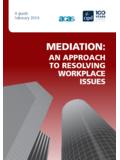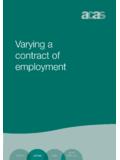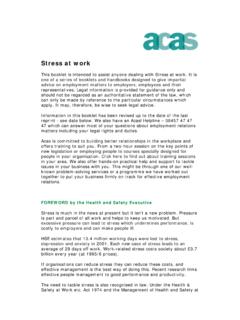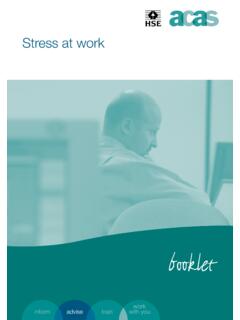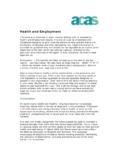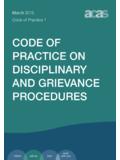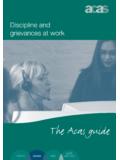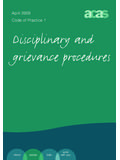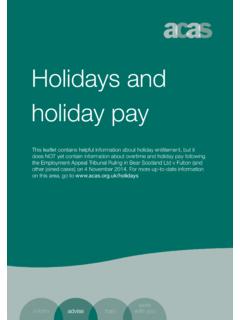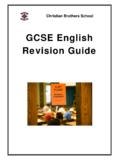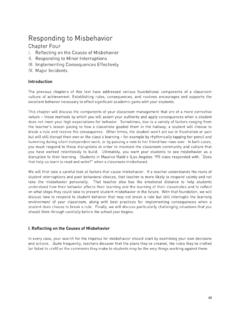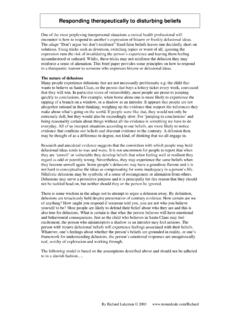Transcription of Asking and responding to questions of discrimination in ...
1 Asking and responding to questions of discrimination in the workplaceAcas guidance for job applicants, employees, employers and others Asking questions about discrimination related to the Equality Act 2010 Every year Acas helps employers and employees from thousands of workplaces. That means we keep right up to date with today s employment relations issues such as discipline and grievance handling, preventing discrimination and communicating effectively in workplaces. Make the most of our practical experience for your organisation find out what we can do for informWe answer your questions , give you the facts you need and talk through your options. You can then make informed decisions. Contact us to keep on top of what employment rights legislation means in practice before it gets on top of you.
2 Call our helpline 08457 47 47 47 or visit our website We advise and guideWe give you practical know-how on setting up and keeping good relations in your organisation. Look at our publications on the website or ask our helpline to put you in touch with your local Acas adviser. Our Equality Direct helpline 08456 00 34 44 advises on equality issues, such as trainFrom a two-hour session on the key points of new legislation or employing people to courses specially designed for people in your organisation, we offer training to suit you. Look on the website for what is coming up in your area and to book a place or talk to your local Acas office about our tailored work with youWe offer hands-on practical help and support to tackle issues in your business with you.
3 This might be through one of our well-known problem-solving services. Or a programme we have worked out together to put your business firmly on track for effective employment relations. You will meet your Acas adviser and discuss exactly what is needed before giving any can help with your employment relations needsAsking And responding to questions of discrimination in the workplAce1 Asking and responding to questionsof discrimination in the workplaceFor advice on Asking and replying to questions covering Goods and Services, refer to the Government Equalities Office website questions referred to in this guide in good faith means generally you are protected under the Equality Act 2010 should you subsequently be victimised because of this 2 discrimination 2 Resolving disputes 4 Asking questions of discrimination at work six step guidance for questioners 6 responding to questions of discrimination at work three step guidance for responders 10 Asking questions about issues to do with equal pay and contractual terms and conditions 15
4 Asking questions Three step guidance for Questioners 17 responding to questions of pay and benefits guidance for responders 18 Annex 1 Questioner s template: organising your questions 21 Asking And responding to questions of discrimination in the workplAce2 IntroductionIssues of discrimination can be complex. A written question and answer process can be particularly helpful in establishing what has happened and can help in trying to resolve concerns, avoiding claims and disputes. This good practice guidance explains how people, such as jobseekers and employees who think they may have been discriminated against under the Equality Act 2010, can ask questions about what may have happened to them and how people or organisations such as employers that receive an information request can respond disputes in the workplace can be assisted if people can ask and respond appropriately to questions about the issues at the core of the a simple question and answer will clear up a misunderstanding.
5 Sometimes an acknowledgement that things have gone wrong or that there may have been discrimination and an offer to put matters right will be all that is necessary to nip a problem in the someone thinks they ve been discriminated against and asks questions , this guide refers to them as the questioner. The person or organisation they are Asking questions of is called the responder. Although the guide refers to employees and employers, it also covers Trade Unions and their members, partnerships and other workplace Equality Act 2010 makes it unlawful to discriminate against someone because of one or more protected characteristics. The protected characteristics are: age, disability, gender reassignment, marriage and civil partnership, pregnancy and maternity, race, religion or belief, sex and sexual conduct under the Equality Act 2010 covers: Direct discrimination : when someone is treated less favourably than another person because of a protected characteristic they have or are thought to have (perceptive discrimination ) or because they associate with someone who has that characteristic (associative discrimination ).
6 Note perception Asking And responding to questions of discrimination in the workplAce3or association discrimination do not cover marriage and civil partnership and pregnancy and maternity, see Acas guidance at for further information; Indirect discrimination : a rule, policy or practice which is applied more widely but has a disproportionately adverse effect on particular groups of people and furthermore this rule policy or practice cannot be objectively justified (see page 12); Victimisation: treating a person badly because they have made, or people think they have made, a complaint about discrimination or have given evidence in a discrimination case; Harassment: unwanted conduct related to a relevant protected characteristic, which has the purpose or effect of violating an individual s dignity or creating an intimidating, hostile, degrading, humiliating or offensive environment for that individual, relevant protected characteristics are limited to race, sex, disability, religion or belief, sexual orientation, age, and gender reassignment; discrimination arising from disability.
7 This means unfavourable treatment because of something arising in consequence of a person s disability; Failure to make reasonable adjustments in relation to on your rights and responsibilities under discrimination law can be found on the Acas website , the website for the Commission on Equality and Human rights at and the Government Equalities Office at Equality Act 2010 also requires men and women to have equal pay for the same job or jobs of equal value or rated as equal by analytical job evaluation (see page 17 for specific questions relating to equal pay issues).The Act applies to the workplace, to the provision of services, exercise of public functions, managing or letting premises, in education, and for associations including private And responding to questions of discrimination in the workplAce4 Resolving disputesBefore taking a claim to an employment tribunal or civil court, an employee or job applicant should normally use the employer s grievance procedure, or other internal dispute resolution mechanism these should be the first port of call.
8 If internal procedures do not result in an acceptable outcome in circumstances that might result in an employment tribunal claim, Acas will provide a free conciliation service Early Conciliation which may avoid the need to make a Conciliation is voluntary but anybody wishing to bring a tribunal claim will first need to notify Acas of their intention to claim. Following this, the prospective claimant s limitation period is put on hold or paused for up to one calendar month to allow for conciliation to take place without the need for the prospective claimant to take any legal steps to protect their rights. This gives time to explore settlement. The pause can end before the calendar month is up if either party makes it clear that they are unwilling to conciliate, or it can be extended by up to 14 days if the parties are still actively working towards settlement with their conciliator.
9 If Early Conciliation doesn t conclude matters, a Certificate will be issued without delay and the claimant will be able to lodge a tribunal claim if they wish And responding to questions of discrimination in the workplAce5 Example:Nilam applies for an internal promotion as a sales manager. She isn t invited for interview. This isn t the first time she has been unsuccessful in getting promotion with her current employer and she asks for reasons why she didn t get an interview. Her employer declines to give this feedback leading Nilam to think she is the victim of racial discrimination . She decides to notify Acas of her intention to make a claim but when the issue of feedback arises during the early conciliation process, the employer explains the reason for not providing it was down to the company policy and applied to all employees.
10 The employer agrees to review this policy and discuss with Nilam her unsuccessful application and how she could improve her chances of promotion through developmental roles within the company to raise her profile. Nilam is persuaded that she was not discriminated against and doesn t make a claim to an Employment Tribunal. The employer changes their policy to automatically give feedback to unsuccessful job or promotion can also be a useful technique in resolving equality and discrimination based disputes before they become Tribunal cases. Further information on mediation and other alternative dispute resolution can be found on: these steps can help resolve a dispute, an employee or job applicant must keep in mind that there is normally a time limit of three months from the day that gave rise to the complaint to making a claim at an employment tribunal (six months if the issue is dealt with by a county court or sheriff court in Scotland).
